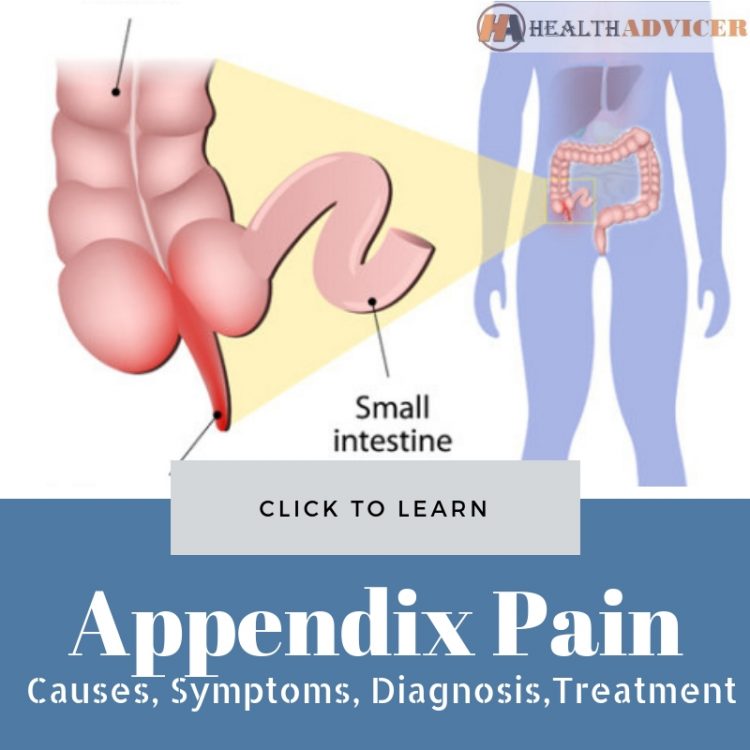Appendix pain or appendicitis occurs due to inflammation of the organ. The appendix is a small organ shaped in the form of your finger. The organ projecting from your colon looks like a pouch. It is situated at the lower right side of your abdominal region. When you suffer from pain, it mostly radiates to your lower side of your abdomen. You can experience the discomfort mostly on the right side. The pain mostly starts around your navel region and escalates as time passes.
Without medical assistance, the inflammation of appendix worsens. So, it becomes severe pain leading to the rupture of the organ. It can result in severe internal bleeding. It is important to prevent fatal complications associated with the health problem. Anyone can develop pain in the appendix. But, the problem is common among people between the age group of ten and thirty. With proper medical assistance, you can handle the problem without any complications. In most cases, you need invasive surgery to remove the organ and get relief from the pain. Read ahead to know details about the problem.
Symptoms Associated With Appendix Pain
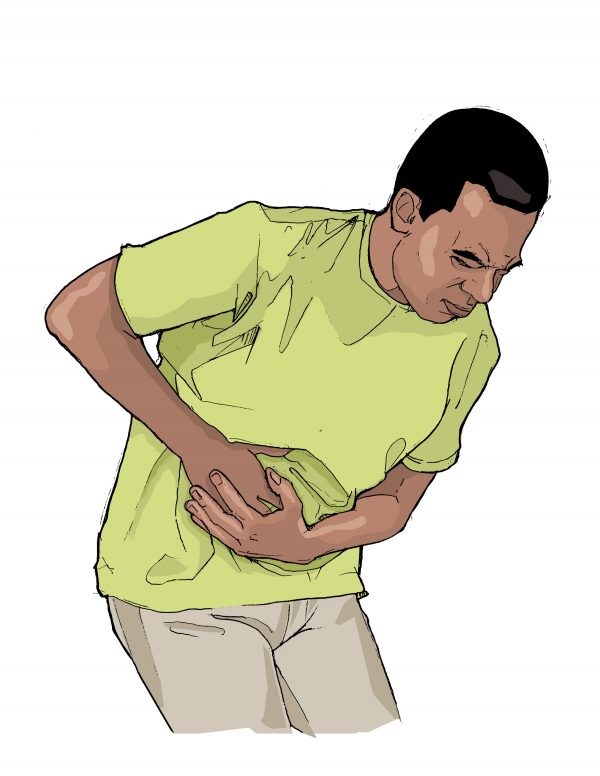
- Pain that erupts suddenly on the right side of your lower abdomen
- Sudden pain that begins in your navel and spreads to the right side of your lower abdomen
- Worsening pain with activities like coughing, walking or other jarring movements
- Loss of appetite
- Nausea and vomiting
- Fever (low grade) that worsens with the progressing illness
- Flatulence
- Diarrhea/Constipation
- Abdominal bloating
The site of appendix pain may vary depending on your age as well as the position of the organ. Pregnant women experiencing pain can feel it coming from the upper abdomen. It is due to the fact that appendix moves higher during pregnancy.
When you experience such worrisome signs, you need to contact your doctor. The inflammation can trigger severe pain. So, you need immediate medical attention to manage the pain and prevent it from escalating.
Causes Of Appendix Pain
Appendix pain occurs due to the inflammation of the organ. Blockage can occur in the lining of your appendix. It can lead to an infection that causes inflammation. When you suffer from the infection, it causes the bacteria to multiply rapidly. So, it can lead to swelling and inflammation of the appendix. It can also fill with pus. The condition requires immediate treatment to overcome the problem. If left untreated, the appendix can rupture. Several different factors can cause blockage in your appendix. The potential causes of appendicitis are:
- The building up of hardened stool
- Intestinal Worms
- Tumors
- Enlarged lymphoid follicles
- Traumatic injury
You need to see a doctor to treat the pain and distress associated with appendicitis. With proper medical assistance, you can manage the problem. Else, it can lead to rupturing of the appendix and increase your risk of internal bleeding.
Types Of Appendix Pain
You can suffer from extreme distress due to the inflammation of the appendix. Depending on the severity of pain experienced, you can classify the condition into the following types:
Acute Appendix Pain
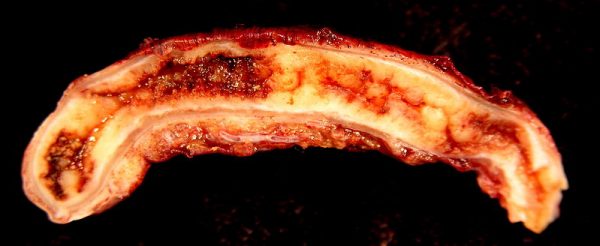
It is the sudden and severe appendix pain you suffer within a short period of time. You can develop the symptoms within one or two days. The condition is also referred to as acute appendicitis. You need immediate medical treatment to deal with the condition. Without treatment, you face the risk of rupturing your appendix. It is a serious as well as fatal complication. It is the most common form of appendicitis compared to the other.
Chronic Appendix Pain
Chronic appendix pain is a rare condition. It is less common compared to acute appendicitis. You experience only mild symptoms associated with the condition. It can appear and disappear over a period of time. So, you can see the signs over a period of weeks, months or years. It is a challenging condition to diagnose. So, a proper diagnosis is not possible until you develop acute appendicitis. It is a dangerous condition that you need to maintain caution.
Appendicitis In Kids
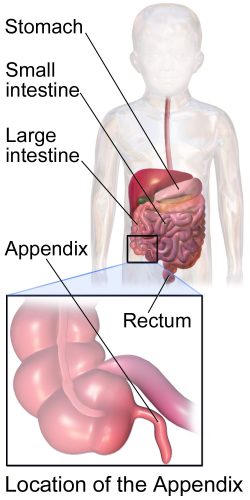
Appendix pain in children is a common scenario. But, it needs immediate medical attention. Although you can develop the problem at any age, it is prevalent in people between the ages of fifteen and thirty. In children or young adults, the condition triggers stomachache. The pain originates from the navel area. It can become more severe and move to the lower side of the abdomen. The condition can trigger other symptoms in children like:
- Vomiting
- Loss of appetite
- Development of fever
- Feeling nauseous
It is important for your child to get treatment right away as the condition can become fatal. Therefore, if you observe the symptoms of appendicitis in your child, get medical assistance as soon as possible.
Complications Due To Appendix Pain
When you fail to get immediate help for your appendix pain, it can result in severe complications. So, you can experience the following problems:
Ruptured Appendix
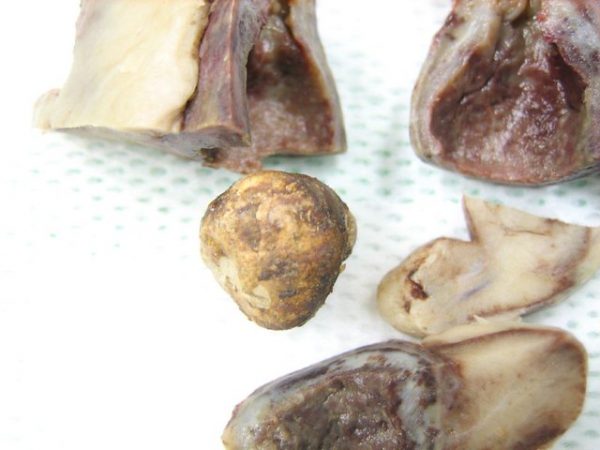
An inflamed appendix tends to rupture. The rupture can spread infection throughout your abdominal region known as peritonitis. It can become a life-threatening condition that requires immediate surgical intervention. The surgery focuses on removing the ruptured organ and cleaning the abdominal cavity.
Abscess Formation
Ignoring inflamed appendix can result in the formation of an abscess. Your abdomen develops a pocket of pus that results in the development of an abscess (pocket of infection). You need to get assistance from your doctor to clear the abscess. The surgeon drains the pus by placing a tube through your abdominal wall that reaches the abscess. The tube stays for two weeks. While you need to take antibiotics to clear the infection.
After the infection clears, you need to undergo surgery to remove the appendix. In some cases, your surgeon removes the organ immediately after draining the abscess.
Diagnosing Appendix Pain
You need to consult your doctor to determine the reason for experiencing abdominal pain. Several other problems can mimic appendix pain. Therefore, your doctor needs to determine the issue conclusively to develop an apt treatment plan. So, the following diagnostic techniques can help determine the problem accurately:
Physical Assessment
The doctor can get the history of the signs as well as symptoms you suffer. The doctor can also examine the abdomen to determine the origin of your pain. Your doctor applies gentle pressure on the area you feel pain. When you have inflamed appendix, the sudden release of pressure can make the pain worse. It signifies towards an inflamed peritoneum. The physical examination also looks for abdominal rigidity. You will have the tendency to stiffen the abdominal muscles as a response to the pressure applied over the inflamed appendix. So, the guarding reaction can point towards appendicitis.
A digital rectal exam is another method to determine the problem. Your doctor uses the gloved and lubricated finger to examine the lower rectum. For women in their childbearing age, some gynecological problems can cause pain. So, your doctor eliminates the possibility by checking the pelvic region. Based on the diagnosis, you need to undergo other tests.
Blood test
Appendix inflammation is an infection that your body tries to fight. So, the white blood cell count can escalate. By performing a blood test, your doctor can determine the presence of the infection in your body.
Urine test
The sample urine is sent to the laboratory for checking the presence of kidney stone or urinary tract infection. The presence of such problems can trigger lower abdominal pain. So, your doctor suggests the test to eliminate the problems.
Imaging tests
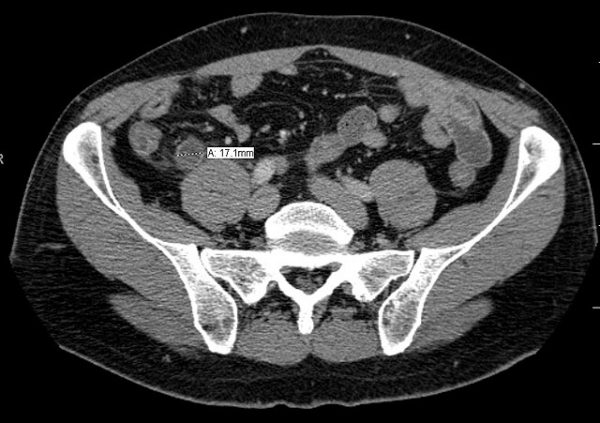
Sophisticated imaging tests can offer a clear view of your appendix. So, imaging tests like abdominal x-ray, CT scan or MRI can help detect the inflammation of your appendix. It can confirm appendicitis or reveal other problem triggering your pain.
Treatment For Appendix Pain
Depending on the severity of your appendix pain, you need treatment. But, in most cases, you need surgery to alleviate the pain associated with the problem. So, you need the following treatment to handle the condition better:
Antibiotics
In rare cases, the pain in the organ can alleviate with antibiotics. It is not the usual case as most people never find relief with the method. But, antibiotics can treat the infection affecting the organ.
Surgery
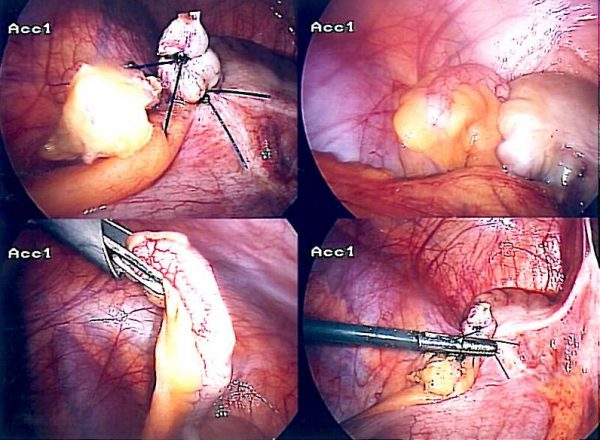
Appendicitis treatment usually involves surgery to remove the inflamed appendix. Before surgery, you may be given a dose of antibiotics to treat the infection. The surgery to remove the organ is known as an appendectomy. You have two options in surgery. Depending on the severity of the inflammation, your doctor can suggest the following:
Open Surgery
The open surgery to remove the appendix is opted by your doctor when your appendix ruptures and the infection spreads to other areas. During the surgery, your doctor makes an incision about five to ten centimeters (approx. two to four inches) to remove the appendix. Your surgeon can also clean the abdominal cavity during the open surgery. It is the ideal surgery when laparoscopic surgery becomes impossible.
Laparoscopic Surgery
Laparoscopic surgery is ideal when you do not suffer extensive infection due to appendicitis. It is the surgery involving few abdominal incision small in size. So, you can recover from the surgery quickly and resume your daily work. It also has less pain as well as scarring. People in their older age or suffering from lifestyle problems like obesity can opt the surgical option. But, you need to find a specialist doctor to perform the surgery. It requires specialized tools and special skills for completing the surgery successfully.
During the procedure, your surgeon makes a small incision to insert a video camera inside our abdomen. It can show appendicitis and the damage caused due to it. Using specialized tools, your doctor removes the appendix and stitches the incisions. It is not ideal when an abscess has formed around the ruptured appendix.
Recovery Period After Appendicitis Surgery
It is important to maintain caution during the recovery period to avoid complications associated with the surgery. The time to recover from the surgery depends on multiple factors like:
- Your overall health
- The possible complications you develop during the appendicitis surgery
- Treatments you receive
Open surgery will take more time to recover. So, you need to spend some time in the hospital to recover. It also requires follow-up care due to the invasive nature of the surgery. But, laparoscopic surgery requires less time for recovery. You can get discharged from the hospital the next day after your surgery. In some cases, people can leave the hospital after a few hours. Before leaving the hospital, your doctor can instruct you about the routine you need to follow to ensure complete recovery. Therefore, you get the following guidelines:
- The clear directions to care for the incision sites.
- The antibiotics you need to take and the duration of the same.
- Pain relievers necessary to get relief.
- Your diet during the recovery period to ensure complete healing.
- The activities you need to avoid (strenuous activities) during the recovery.
- Changes you need to make in your daily habits.
You need to follow the instructions suggested by your doctor religiously to recover from the appendix operation.
Lifestyle And Home Remedies After Appendix Surgery
After the surgery to relieve appendix pain, you need can follow some steps at home to speed up the recovery process. If you have suffered only appendix inflammation, then you can heal within a few weeks. But, for appendix rupture and subsequent surgery, you need to spend more time to get relief. So, you can follow the pointers to help your body heal properly:
Avoid Strenuous Activities For A While
Depending on the surgery opted to alleviate appendix pain, you need to take things slowly. You can resume your daily activity after a laparoscopic surgery within 3-5 days. Open appendectomy takes more time to heal. So, you need to restrict strenuous activity for at least ten to fourteen days. You need to talk to your doctor about the activities you can resume after the surgery.
Reduce Abdominal Pressure
You need to limit putting pressure on your abdomen. You need to support your abdomen when you cough. So, place a pillow over your abdomen when you move, cough or laugh.
Consult Your Doctor
When you suffer from pain even after taking pain medications, you need to talk to your doctor. Pain in your body can slow the healing process. It adds extra stress on your body. Therefore, consult your doctor to get a stronger dose of pain relievers.
Start Slow And Increase Its Intensity
You need to start moving when you feel completely ready. Start at a slow pace and slowly increase the activity. So, start with short walks and gradually increase the pace.
Get Adequate Rest
You need to take rest and sleep well. As your body works to heal properly, you can feel tired. Therefore, you need to take a good rest while you recover. Sleep whenever you feel tired.
Take Doctor’s Advice
You need to talk to your doctor before returning back to your regular activities. You can return to work or go to school after getting the green signal from the doctor. Wait for at least two to four weeks to resume the strenuous activities like sports or gym classes.
Alternative Medicine To Deal Appendectomy
You can experience pain after appendectomy. Your doctor prescribes medications to manage the pain after the surgical procedure. But, you can also opt for some alternative and complementary treatments to deal with pain in a better manner. When you use the methods with your medication, it will alleviate the distress associated with the procedure. So, you can talk to your doctor about the following safe options:
Distracting Activities

You can distract yourself from pain by focusing on other interesting activities. So, the following activities can take your mind off the pain:
- Talking with friends
- Listening to music
The distraction helps overcome pain in children. It is an effective method that you can try on young children who have undergone an appendectomy.
Guided Imagery
Guided imagery, such as closing your eyes and thinking about a favorite place.
Preventing Appendix Pain
While you cannot prevent appendix pain due to inflammation of the organ, you can take some steps. It will lower your risk of developing the inflammation. It is not a sure way to prevent the condition. But, you can include the suggestion to improve your overall health and reduce the risk of appendicitis.
Diet
You can include a fiber-rich diet. The high-fiber diet can lower the risk associated with appendix inflammation. Therefore, you need to include the following food groups in your diet:
- Fruits
- Vegetables
- Oatmeal
- Whole Wheat
- Brown rice
- Whole grains
- Lentils
- Beans
- Split peas
- Other legumes
You can also take fiber supplement in your diet to ensure you eat high-fiber food that can reduce the chances of inflammation.
Get Checkups
You can get regular checkups if you suspect appendix pain. You can get the doctor’s assistance to deal with the problem in an appropriate manner.
Conclusion
Appendix pain signifies inflammation of the organ. So, it needs immediate medical attention. Appendicitis is one of the most common problems suffered by people around the world. So, do not worry about it too much. With proper and timely medical care, you can combat the problem. But, without treatment, your appendix faces the risk of bursting. It can lead to the bacteria spilling into your abdominal cavity. It becomes a serious and fatal condition. Therefore, take necessary steps before it affects you adversely.
View Article Sources

